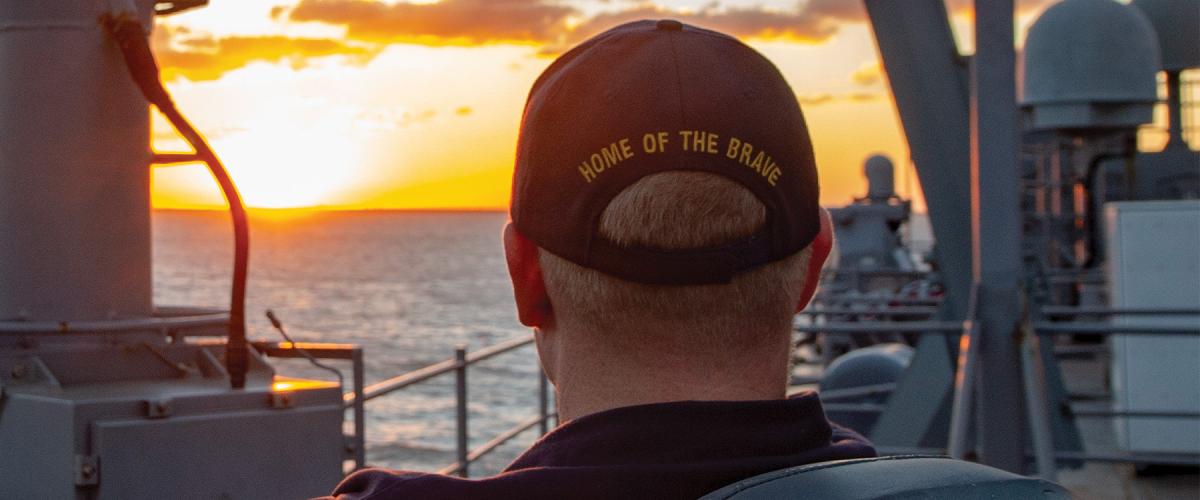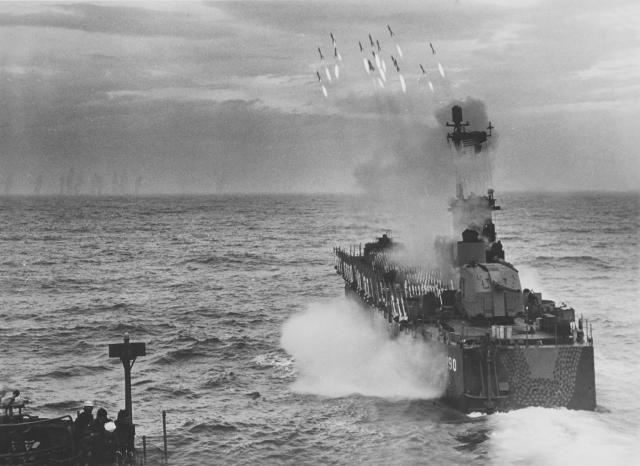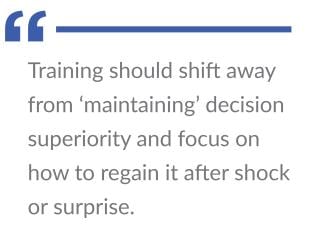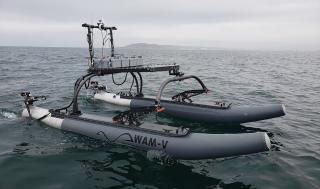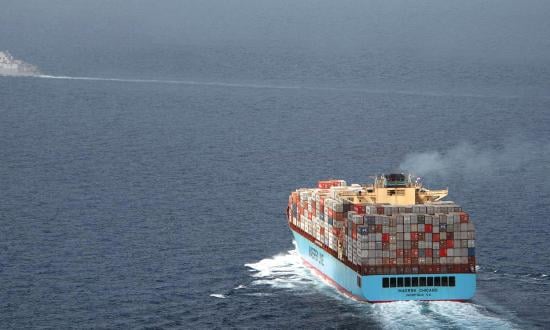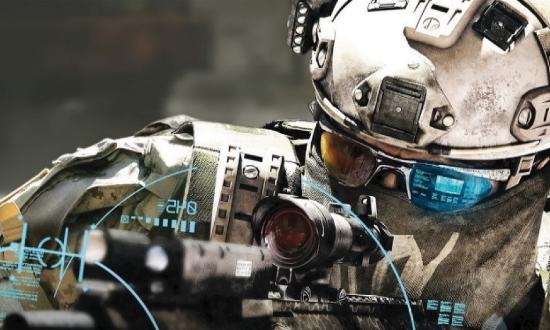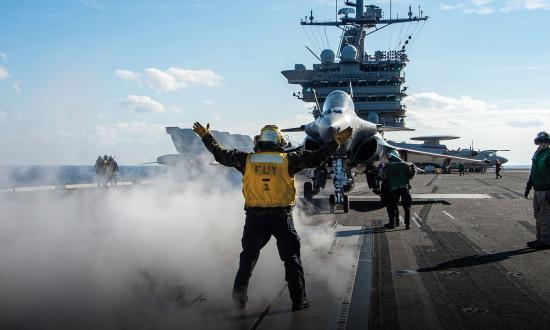On 7 December 1941, the concentrated striking power of the Imperial Japanese Navy’s mobile force—six carriers and more than 350 planes—shattered the heart of the U.S. Navy’s Pacific Fleet. The Pearl Harbor raid destroyed the U.S. battle line, shredded Admiral Husband E. Kimmel’s plans for offensive action in the central Pacific, and freed the Japanese to advance southward through the Philippines and Netherlands East Indies. The physical toll was devastating, but the mental one was arguably worse. Admiral Isoroku Yamamoto’s goal was to shatter the U.S. Navy’s morale, convince the American people that war in the Pacific was not worth fighting, and quickly secure a fait accompli in the western Pacific.1 His plan almost worked. The Japanese strike was a “technological and doctrinal surprise,” an unanticipated combination of weapons and tactics that disrupted existing paradigms of naval warfare.2 It put many U.S. Navy officers into a “state of shock.”3 The response of Rear Admiral Raymond Spruance, commander of Cruiser Division Five, was typical: The attack was “the most shattering experience of his life.”4
When Admiral Chester W. Nimitz, the newly appointed commander of the Pacific Fleet, arrived at Pearl Harbor, he recognized that his priority had to be restoring the “morale and confidence” of the fleet and its officers.5 Nimitz proceeded cautiously, but he succeeded through a series of operations that helped his officers overcome their shock, adapt in the face of uncertainty, and revise their assumptions as new information became available.
With the battle line destroyed, Nimitz employed his remaining strengths. He disrupted Japanese plans with hit-and-run carrier raids. He sought clues to Japanese intentions through code-breaking and signals intelligence. At the Battle of the Coral Sea, for example, Nimitz kept the Japanese from capturing Port Moresby in southern New Guinea. When the Japanese tried to ambush what remained of the Pacific Fleet, he seized the opportunity and turned the tables at Midway. In that battle, the ability of Nimitz and his staff to readily adapt to emerging circumstances transformed the war. The Navy’s ability to continually reconfigure its approach remained crucial throughout the conflict.6
Nimitz’s approach built on an established foundation of officer training and preparation. In the years before World War II, the Navy trained officers to adapt to unanticipated circumstances and, in the words of then–Chief of Naval Operations (CNO) Admiral William V. Pratt, “act quickly . . . [and] form a clear and concise decision” to overcome conditions of great uncertainty.7 Senior leaders worked to make the officer corps “the most intelligent and best educated” in the world and equip officers to, as a more recent commentator put it, engage in war’s “never-ending decision-making process.”8
Today, this ability is described as intellectual readiness—the cognitive and psychological preparedness necessary to sustain performance and respond appropriately in the face of uncertain and complex situations.9 It is the psychological and mental equivalent of physical readiness, and it describes the traits of an individual, as well as the characteristics of a whole organization. At the individual level, intellectual readiness encompasses a person’s expertise, attitudes, and motivation, all of which are essential to prepare for war. At the organizational level, intellectual readiness encompasses the systems that govern how individuals are trained to think and act, including the factors that condition and incentivize behavior, such as the standards for promotion and receptivity to new ideas.
Today, the Navy is emphasizing intellectual readiness because of the potential for a near-peer conflict with a technologically adept adversary. This motivation echoes the Navy’s work in the 1930s. The importance of intellectual readiness is as salient today—in light of emerging technological threats—as it was at the start of the 20th century. Investments in intellectual readiness during those years kept Yamamoto’s plan for the “Day of Infamy” from succeeding.
Historical Value Of Intellectual Readiness
The Navy of the early 20th century faced an explosion of new technologies that transformed naval warfare. Torpedoes, radio, submarines, and aircraft offered new ways to organize and fight. However, the best ways to capitalize on those technologies and integrate them into a cohesive whole—a battle fleet—was uncertain. To discover techniques that worked, the Navy embraced a strategy of research and development that allowed and encouraged experimentation in regular exercises. The Navy used lessons from those exercises to adapt and adjust tactics, doctrine, and ship design. A basic pattern of exercises was established before the U.S. entry into World War I, but during the interwar period (1919–1939), the pattern of exercises was formalized into a learning system. Multiple layers of integrated feedback loops tied tactical doctrine, operational concepts, and war planning together, helping to advance preparation for war.10
At a time of great uncertainty and accelerating technological development, the Navy used its people and their ingenuity to improve. It recognized the need for innovation to emerge from within, rather than handing down new procedures from above. The Navy provided liberal opportunities for experimentation and listened carefully to those interacting with new technologies. Frequently, when feedback from deckplate leaders suggested the need for change, effective adjustments were made. In short, the Navy of the early 20th century embodied characteristics of intellectual readiness and was able to pivot when the rules changed. Given the parallels to today’s operational environment, it is prudent to ask whether today’s Navy creates those same conditions.
Three core assumptions helped the Navy of the early 20th century foster the intellectual readiness that proved so crucial in wartime. First, officers recognized that the future was uncertain. Technologies and tactics were changing too rapidly to accurately predict which would be most effective in coming years. At the same time, the open-ended nature of the Navy’s exercises reinforced that combat would always be unpredictable, regardless of how well the Navy mastered modern technologies. Officers embraced Carl von Clausewitz’s perspective that war is “a manifold of innumerable individual contingent events.”11 Therefore, training emphasized that victory could not be won through formulas or rote procedures. Instead, sailors were encouraged to possess and develop creativity, imagination, and, above all, the ability to adapt using “practical, operational knowledge.”12 As the Naval War College pamphlet “Sound Military Decision” declared, “Success” would come only after lessons won through “the strain of campaign and
. . . the shock of battle.”13
The second assumption was that there were no universal truths of war that could be applied regardless of context. Instead, the Naval War College familiarized officers with principles—broad concepts that reflected thematic lessons from history—and challenged those officers to determine which principles to employ in demanding hypothetical situations and how best to do so. Theoretical study reflected the belief that war was extremely context dependent. This assumption was most obvious in the Navy’s approach to doctrine, which developed from the bottom up in individual squadrons and divisions. This allowed doctrine to realistically reflect the specific potential of the fleet. The bottom-up approach had several notable successes, including John S. Thach’s fighter combat tactics, Arleigh Burke’s night battle plans, and the initial development of the combat information center.14 The approach capitalized on mature, capable personnel who were trusted to organically develop doctrine at the deckplate level.
Last, Navy officers were pragmatic. They assumed the only way to address uncertainty and identify the best doctrines was to subject ships, planes, technologies, and tactical concepts to real-world tests. Theory could define what was possible, and the game board at the Naval War College could provide valuable insights, but only hands-on experience at sea could validate that something worked. This pragmatism produced several favorable outcomes. The system of exercises and feedback loops allowed officers to grapple with uncertainty, test alternatives, and identify which were suitable for future exploitation. These exercises also afforded greater familiarity with, and trust in, emerging technologies. Time spent tinkering with them and exploring their potential increased confidence that they could be used effectively, even under challenging circumstances.
These three assumptions—the uncertainty of the future, the lack of universal truths, and the importance of real-world validation— provided a solid foundation for intellectual readiness that prepared the Navy for World War II.15
Enabling The Most Critical Warfighting Capability: People
Today’s operational landscape is changing quickly. Artificial intelligence (AI), autonomous systems, and the speed of modern software—both the pace at which it can be developed and the speed with which it can process data and information—are disrupting established paradigms. Intellectual readiness is required to acknowledge these potential disruptions, explore the possibilities they offer, and continually revise assumptions as more is learned. That ability will be crucial to secure and capitalize on what the current CNO, Admiral Michael M. Gilday, has called “the Navy’s asymmetric advantage”: the intellectual capacity of its officers and sailors.16 Three years ago, after the completion of the Education for Seapower (E4S) study, Navy Secretary Richard V. Spencer echoed his forebears by arguing that “the intellectual development of our naval leaders is the most critical warfighting capability for our national security.”17 To succeed in conflict, many have argued, the Navy must improve the intellectual readiness of its officers and sailors and adjust how it approaches innovation and change.
To investigate the role of intellectual readiness for emerging technologies in the U.S. Navy, one of the authors conducted a study. Over the course of seven months, using a mixed-methods approach based on grounded theory, Lieutenant Vorm interviewed 49 individuals, including historians, authors, and professors who specialize in organizational culture and the history of naval innovation and technology; he interviewed active-duty officers and enlisted sailors who are currently working on the front lines of emerging technologies such as the medium and large unmanned surface vessel, DDG-1000, and Columbia-class ballistic missile submarines; and he interviewed scientists and engineers who are developing emerging technologies such as quantum computing, advanced cyber concepts, and various autonomous and robotics systems. This blend of historical, current day, and future perspectives helped him generate a holistic model of intellectual readiness for emerging technologies.
During World War II, the Navy flexibly approached battle plans, procurement strategies, and operational planning because it developed intellectual readiness into a “critical warfighting capability.” Interviews with today’s leaders, however, indicate current naval officers are more constrained. Operational exercises, including Rim of the Pacific and Trident Warrior, were described as exercises in completing lengthy checklists rather than realistic emulations of combat conditions. Live-fire events may take more than half a day to complete “by the book,” and may be canceled altogether if conditions are not ideal. Contrast this with antiaircraft firing exercises from 1945 that averaged six seconds from initiating the event to opening fire.18 Instead of simulating the challenges of actual battle, today’s exercises create stress about following the rules and putting on a good show. Ship captains are under tremendous pressure to operate exactly as directed. Even minor deviations in standard operating procedures are likely to be grounds for censure rather than praise for innovation or creativity. Ideas that emerge from the deckplates—which come from an increasingly educated and technologically skilled generation of junior officers and enlisted sailors—are unlikely to be considered seriously by senior planners and policy makers.
Existing training that reinforces known patterns and rote memorization—and deemphasizes critical thinking and creativity—is a poor choice for responding to unknown and unanticipated threats. Conversely, a fighting force composed of psychologically resilient, competently trained, and educated minds empowered to think flexibly and creatively is the best way to overcome uncertainty. More important, policies that punish deviations from standardized procedures and limit options for exploration reinforce a “paint-by-numbers” approach to readiness, which devalues the intellectual capital of today’s naval personnel and reduces the Navy’s potential for innovation. There is no shortage of innovative and creative leaders in today’s Navy, but their ideas, along with their willingness to offer them up, are largely discouraged by the current organizational culture. The Navy’s attitude toward today’s people and their contributions suggests it has forgotten that they are its “greatest asset.”
Recommendations
So, what can be done? Fortunately, the Navy’s history provides a conceptual framework for how to right the ship. Interwar officers were taught principles that they learned to employ in different contexts. The context in 2022 is different from that of 1922, but the core assumptions and principles the Navy used then are still relevant. We offer the following broad recommendations.
For Individual Development
Develop training that reinforces creative, outcome-based thinking, rather than promoting formulaic approaches.
Training should shift from “maintaining” decision superiority to regaining it after shock or surprise. The outbreak of a hot war with a near-peer adversary will be shocking and traumatic. Focusing on how quickly a person can regain composure, recover from an unexpected event, and be ready to make decisions under stress is very different from the current focus on maintaining decision superiority. An excellent way to achieve the former is with free-play wargames such as those of the Marine Corps’ School of Advanced Warfighting (SAW), which challenges students to formulate and execute plans against skilled and challenging opponents.
Create more command opportunities earlier in the career path to allow a broader cadre of officers to develop the associated leadership and intellectual skills.
Consider the potential benefit of giving young officers command opportunities. Nimitz took command of the destroyer USS Decatur (DD-5) when he was just 22. That was unusual, but some of his contemporaries also had early commands. Raymond Spruance had his first command at 26, William F. Halsey at 30, and Ernest J. King at 36. Command at or before 30 was much more common a century ago than it is now. It is reasonable to ask what impact this had (or has had) on intellectual readiness.
Provide (or require) one- or two-day courses in design thinking, human-centered design, and basic military acquisitions.
Innovative ideas are often crushed by siloed organizations that do not encourage cross-functional collaboration. Design thinking and human-centered design teach strategies that improve communication and collaboration across organizational siloes. Equipping officers and sailors with these skills will allow them to navigate the Navy’s existing bureaucracies and sell their creative ideas. Offering basic military acquisition training (aka, “acquisitions lite”) would vastly improve understanding of how the system works and create opportunities to present ideas in ways that will keep them from being dead on arrival.
For Organizations
The recommendations below are grounded in the assertion that the Navy already possesses innovative and creative thinkers who have disruptive and paradigm-shifting ideas. The inner workings of the organization itself—how information flows, how creative ideas are treated, how deviations from standard operating procedures are interpreted—all play a role in determining whether innovation will occur. The following recommendations focus attention on well-documented “idea-killing” behaviors.
Shift the emphasis away from efficiency and toward increasing adaptability, resiliency, and creativity.
An effective innovative ecosystem requires an environment that encourages experimentation and creativity over rote memorization or adherence to procedures. At the highest levels, officers and civilian leaders must support increasing intellectual readiness with evaluation and promotion policies that reward innovative and creative thinking, that allow failure (e.g., learning) and experimentation, and that embrace a diversity of ideas. All leaders are a product of the system that promoted them; the Navy must select for the skills it wants.
Recognize that innovation requires experimentation and change.
Existing processes cannot be considered sacred, no matter how long they have been in existence or how effective they have been. Change, in all its forms, must be expected and welcomed, and the best way to identify how to change is through honest, and rigorous, experimentation. Lieutenant Vorm’s study, combined with a wealth of historical data, suggests that the most predictive factor of whether a new idea will be adopted by the Navy is the presence of flag-level endorsement. Many ideas gain traction only when they are endorsed at the flag/senior-executive-service level, but to get to this level ideas must survive a gauntlet of scrutiny and gatekeeping, much of which is unnecessarily hostile to new ideas. Many good ideas lose traction when sponsoring leaders retire or move positions. This “patronage” model of innovation relies on the will of specific personalities and is unsustainable. An innovation ecosystem honors heritage but expects change and embraces experimentation.
Provide (or require) training and coaching on how to manage innovation and innovators.
Officers at the commander level and above, senior enlisted, and GS-14 and above civilians play a crucial role in supporting and allowing new ideas to blossom. However, the Navy’s middle management displays significant hostility to ideas that threaten to disrupt the status quo. Leaders must be trained to become champions, sponsors, and barrier-smashers, rather than gatekeepers. They must also be trained to recognize the traits and characteristics of creative and innovative people. Such people are often misunderstood and labeled as troublemakers, misfits, or rebels because they have deep intellectual curiosity and challenge the status quo. Through one lens, their behavior can be interpreted as insubordination, but, when managed appropriately, it is extremely valuable and can move the organization forward. Leaders who employ a one-size-fits-all management style often create hostile environments that force innovative thinkers to mask themselves. This results in bad outcomes for the individual and the organization: one feels stifled and frustrated, while the other is deprived of innovative ideas. Managers play a crucial role in harnessing the creative potential of individuals, and they need training to recognize it and capitalize on it.
In January 1941, when Admiral King assumed command of the Atlantic Fleet, he spoke to the importance of intellectual readiness. Stressing the need to foster the initiative and creativity of his officers, King said, “If . . . [they] are deprived . . . of that training and experience which will enable them to ‘act on their own’ . . . if they are not habituated to think, to judge, to decide and to act for themselves . . . we shall be in a sorry state when the time of ‘active operations’ arrives.”19 By “active operations,” King meant war. War demands creativity. War demands intellectual readiness. The Navy must do more to prepare its officers for potential “active operations.” Otherwise, the next Pearl Harbor may succeed where Admiral Yamamoto failed.20
1. Jonathan Parshall and Anthony Tully, Shattered Sword: The Untold Story of the Battle of Midway (Washington, DC: Potomac Books, 2005), 73–77.
2. Meir Finkel, On Flexibility: Recovery from Technological and Doctrinal Surprise on the Battlefield (Stanford, CA: Stanford University Press, 2011), 29.
3. “Notes on Conversation with Fleet Admiral Chester Nimitz at 101 Washington Street, Newport, R.I., 5:30 to 6:30 p.m.,” 13 October 1961, Papers of Rear Adm. Henry E. Eccles, USN, Manuscript Collection 52, Naval War College Archives, Newport, R.I.
4. Thomas B. Buell, The Quiet Warrior: A Biography of Admiral Raymond A. Spruance (Annapolis, MD: Naval Institute Press, reprint 1987), 109.
5. “Notes on Conversation with Fleet Admiral Chester Nimitz.”
6. Frank Hoffman has demonstrated that adaptation was core to the U.S. Navy’s submarine campaign in the Pacific in World War II. See Frank G. Hoffman, Mars Adapting: Military Change During War (Annapolis, MD: Naval Institute Press, 2021), 56–103; Nimitz’s ability to regularly reconfigure his command and staff structure was also crucial. See Trent Hone, Mastering the Art of Command: Admiral Chester W. Nimitz and Victory in the Pacific (Annapolis, MD: Naval Institute Press, 2022).
7. “United States Fleet Problem XII, 1931, Report of the Commander in Chief United States Fleet,” Admiral J.V. Chase, U.S.N., 1 April 1931.
8. “Report of Tactical Exercises 3-5 October,” Commander-in-Chief, United States Fleet, 12 October 1933; Ian T. Brown, A New Concept of War: John Boyd, the U.S. Marines, and Maneuver Warfare (Quantico, VA: Marine Corps University Press, 2018), 92.
9. For more details on the value and importance of intellectual readiness, see E. S. Vorm, PhD, “Intellectual Readiness for Emerging Technologies,” U.S. Naval Research Laboratory, 30 June 2022.
10. Trent Hone, Learning War: The Evolution of Fighting Doctrine in the U.S. Navy, 1898–1945 (Annapolis, MD: Naval Institute Press, 2018), 122–62.
11. Anders Engberg-Pedersen, Empire of Chance: The Napoleonic Wars and the Disorder of Things (Cambridge, MA: Harvard University Press, 2015), 64.
12. Engberg-Pedersen, Empire of Chance, 95.
13. “Sound Military Decision,” Naval War College, Newport, RI, (reprint July 1942), 198.
14. John B. Lundstrom, The First Team: Pacific Naval Air Combat from Pearl Harbor to Midway (Annapolis, MD: Naval Institute Press, 1984), 309–13, 351–56; E. B. Potter, Admiral Arleigh Burke (Annapolis, MD: Naval Institute Press, 1990), 83–86, 101–107; Hone, Learning War, 208–39.
15. This should not be taken as a criticism of theory, only a recognition of its limitations. Julian Corbett emphasized a similar perspective in his introduction to Some Principles of Maritime Strategy (New York: Longmans, Green, and Co., 1911). For Corbett, theory increases a nation’s ability to “decide on a coherent plan of war” but lacks the precision necessary to guide specific battlefield decisions. The U.S. Navy’s historical perspective was similar.
16. @USNavyCNO Tweet dated 7 June 2022, twitter.com/usnavycno/status/1534262578326777863.
17. “Education for Seapower Decisions and Immediate Actions,” Secretary of the Navy Richard V. Spencer, 5 February 2019.
18. VADM Lloyd M. Mustin, The Reminiscences of Vice Admiral Lloyd M. Mustin, 2 vols. (interviewed by John T. Mason Jr., Annapolis, MD: U.S. Naval Institute, 2003), 2:885.
19. RADM J. A. Furer, USN, Administration of the Navy Department in World War II (Washington, DC: Government Printing Office, 1959), appendix 1, “Admiral E. J. King’s Philosophy of Command.”
20. CINCLANT Serial 053, “Exercise of Command—Excess of Detail in Orders and Instructions,” 21 January 1941, Papers of Ernest Joseph King. Manuscript Division, Library of Congress, Washington, D.C., box 8.



